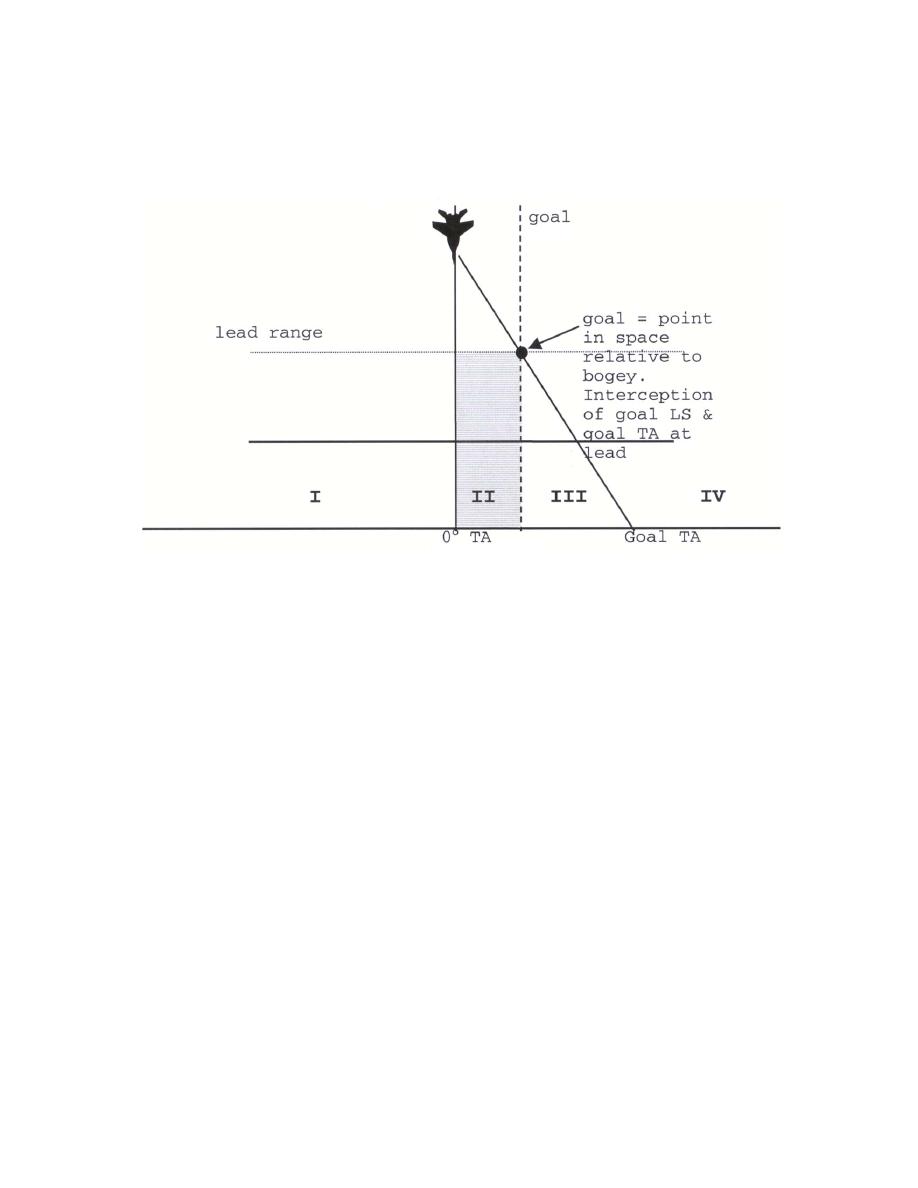 |
|||
|
|
|||
|
|
|||
| ||||||||||
|
|  INTERCEPT PROCEDURES TEXTBOOK
I/II: not enough target aspect, not enough LS.
III: enough LS, but not enough target aspect.
IV: too much target aspect and too much LS.
Figure 4
Lateral Separation
To calculate the LS that the fighter will have at lead range (which is the only LS we are
concerned with), simply multiply the TA times the range at which the normal lead turn occurs.
For example, 10 TA goes to lead at 12 miles, so LS would be 12k. 25 TA, on the other hand,
goes to lead at 10 miles, so LS is 25k (all TAs > 22 will equate to a LS that is equal to the TA).
Area I/II Not enough TA, Not enough LD
In an area I intercept, the fighter wants TA on the opposite side from what it has at the start
of the intercept. Area I problems turn into area II problems once the fighter crosses bogey flight
path to the desired side. In effect, the cut into on the area 1 problem becomes a cut away when
the DOP changes. Whether the fighter starts out in area I or II, once the fighter is located in area
II, LS is between 0' and the goal LS. Because there is not enough LS or TA, the fighter needs to
use a cut away from the bogey's flight path, attempting to increase LS and TA. This cut places
the BB on the opposite side of BR with respect to fighter heading.
135
|
|
Privacy Statement - Press Release - Copyright Information. - Contact Us |